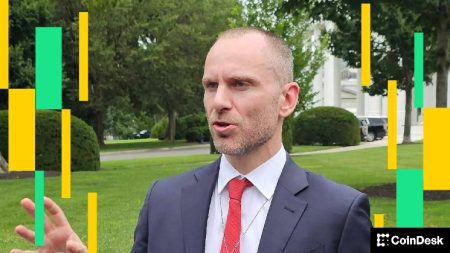The Rise of Bitcoin and the Potential for a U.S. Strategic Reserve
The meteoric rise of Bitcoin in recent years has captured the attention of investors, governments, and even former U.S. President Donald Trump. Bitcoin’s price has experienced dramatic fluctuations, reaching record highs and enduring significant dips. However, the underlying technology and its potential for disrupting traditional financial systems have fueled continued interest and investment. Trump’s endorsement of a U.S. Bitcoin strategic reserve has further propelled the discussion around Bitcoin’s role in the global economy. This concept, mirroring the U.S. strategic petroleum reserve, aims to secure a significant holding of Bitcoin to protect against market volatility, potentially influence the cryptocurrency’s valuation, and solidify the U.S.’s position in the evolving digital asset landscape.
Michael Saylor, founder of MicroStrategy, a company that has heavily invested in Bitcoin, has presented a compelling case for the strategic reserve. His "digital asset framework" outlines the potential benefits of such a reserve, including strengthening the U.S. dollar, mitigating national debt, and establishing the U.S. as a leader in the digital economy. Saylor’s projections are ambitious, forecasting trillions of dollars in potential gains through the expansion of digital capital markets and the growth of other digital assets. He believes a U.S. Bitcoin reserve could generate significant wealth for American investors and drive demand for U.S. Treasuries, contributing to overall economic stability and growth.
The proposal for a U.S. Bitcoin strategic reserve has gained traction among some lawmakers, with Senator Cynthia Lummis introducing a bill to Congress outlining a plan for the Treasury to acquire one million Bitcoin over time. This move underscores the growing recognition of Bitcoin’s potential within government circles. While there remains debate about the feasibility and potential risks of such a reserve, the conversation reflects a shifting perspective on digital assets and their potential role in national economic strategy.
Trump’s Shifting Stance on Bitcoin and the Geopolitical Implications
Donald Trump’s evolving stance on Bitcoin is a significant development in the cryptocurrency’s narrative. Initially skeptical, even referring to Bitcoin as a "scam," Trump has since become a vocal proponent, advocating for the strategic reserve. This shift highlights the growing acceptance of Bitcoin as a legitimate asset class and its potential geopolitical significance. With Russia purportedly considering a similar Bitcoin strategy, the race to establish a national reserve underscores the increasing competition between nations in the digital asset arena. The establishment of a significant Bitcoin reserve could provide a strategic advantage in the global financial landscape, potentially influencing the direction of the digital economy.
The potential impact of a U.S. Bitcoin reserve extends beyond domestic economic considerations. It could shape the global financial system, influence the adoption of digital currencies, and potentially challenge the dominance of traditional reserve assets like gold. Saylor’s framework suggests that a strategic reserve could propel the growth of the entire digital asset market, with the U.S. positioned to capture a significant share of this burgeoning sector. The implications for international trade, investment, and financial stability are substantial, and the unfolding developments are being closely watched by governments and financial institutions worldwide.
MicroStrategy’s Bitcoin Bet and the Broader Market Implications
MicroStrategy’s transformation from a software company to a "Bitcoin treasury" has become a prominent example of corporate embrace of cryptocurrency. The company’s aggressive acquisition of Bitcoin, funded by convertible notes and share offerings, has fueled its stock price, even outperforming high-flying tech stocks like Nvidia. MicroStrategy’s inclusion in the prestigious Nasdaq 100 index further validates its strategy and is expected to attract more investors. The company’s performance serves as a case study for other businesses considering integrating digital assets into their financial strategies.
MicroStrategy’s success underscores the growing acceptance of Bitcoin as a legitimate investment asset and its potential to generate significant returns. The company’s bet on Bitcoin appears to have paid off handsomely, demonstrating the potential for substantial gains in the cryptocurrency market. This success story is likely to encourage other companies to explore similar strategies, potentially driving further investment in Bitcoin and other digital assets. The increasing institutional adoption of Bitcoin is a significant trend that is likely to shape the future of the cryptocurrency market.
The Future of Bitcoin and the Digital Asset Landscape
The future of Bitcoin and the broader digital asset market remains uncertain, with ongoing debates about regulation, adoption, and long-term viability. However, the growing interest from institutional investors, governments, and prominent figures like Donald Trump suggests that digital assets are here to stay. The development of national strategic reserves, the increasing adoption by corporations, and the ongoing evolution of blockchain technology are all shaping the future of finance.
The rapid growth of the cryptocurrency market has created both opportunities and challenges. The potential for disruptive innovation is undeniable, with blockchain technology promising to transform various industries. However, the volatility of cryptocurrency prices, the regulatory uncertainty, and the potential for misuse pose significant risks. Navigating this evolving landscape requires careful consideration of both the potential rewards and the inherent risks associated with digital assets. The ongoing dialogue among policymakers, investors, and technologists will be crucial in shaping the future of this rapidly evolving space.













